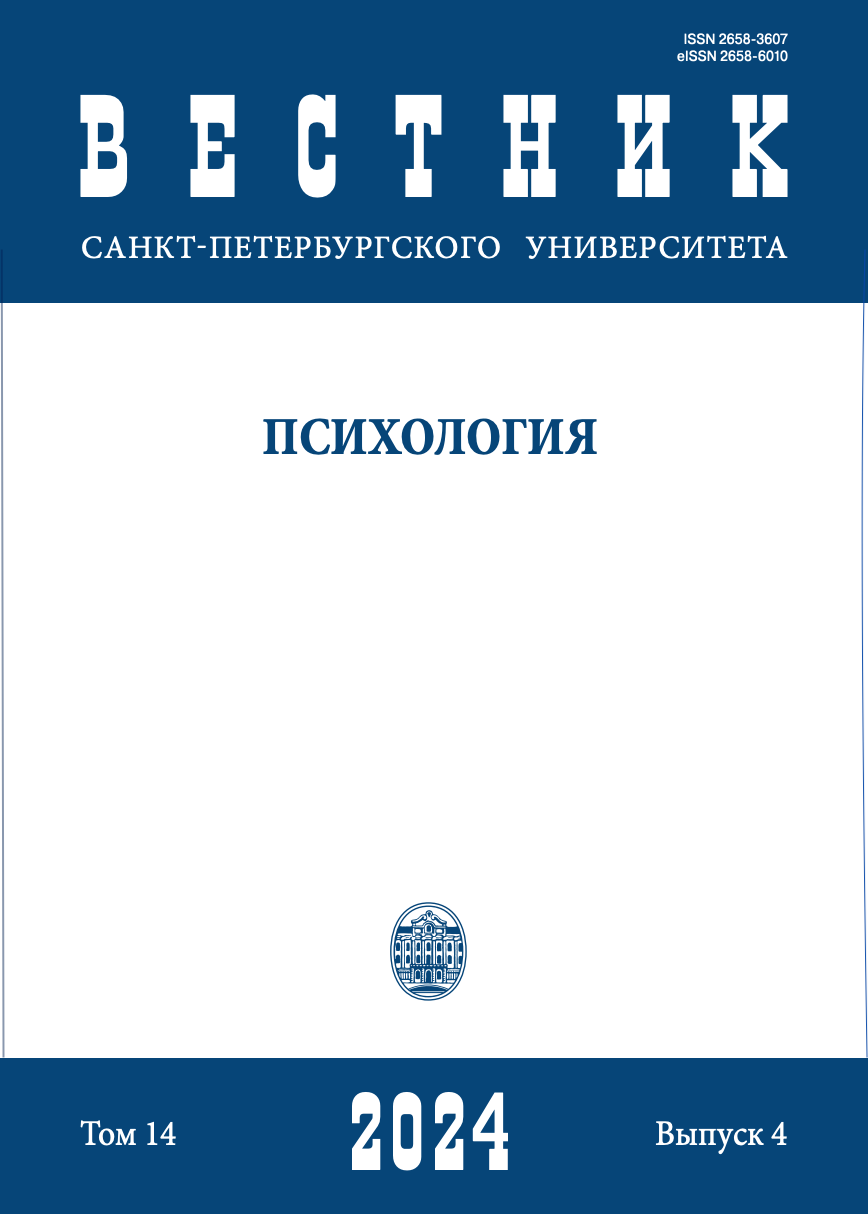Social interaction and everyday stress of adolescents in different types of families
DOI:
https://doi.org/10.21638/spbu16.2024.408Abstract
The social interaction and daily stress of adolescents living in different types of families are considered. Research, as a rule, is aimed at considering areas of interaction with family, teachers and peers, not always taking into account the type of family: native or foster, its financial security, the number of members. The aim of the study was to study the stress of adolescents living in different types of families: relatives, foster families, with different levels of material wealth and different numbers of children in the family. The hypothesis was the assumption that the spheres of stress and its level may vary with different types of family structure. The type of family can determine the peculiarities of social interaction. Studies of everyday stress have shown that various spheres of life can be a source of stressors: family, school, communication with peers and with elders, as well as internal experiences: self-attitude, rejection, fears. At the same time, there is practically no research on the correlation of everyday stresses in connection with the peculiarities of social interaction and socio-psychological adaptation. Methods: SPA technique (K. Rogers, R. Diamond), questionnaire of social support (G. Sommer, T. Fyudrik), "School situation" (V.K. Zaretsky, A.B. Kholmogorova), Questionnaire of everyday stressors for adolescents (L.A. Golovey, O.S. Galasheva), Scale of perceived stress (V.A. Ababkov et al.). Sample: 197 people aged 13 to 17 years. The results showed that adolescents from foster families have a higher intensity of experience in the areas of "Loneliness, health", "Fears, anxiety", adolescents from families with one child have significantly higher intensity of experience in the areas of "Fears, anxiety", "Finances". It was revealed that in adolescents from native families, learning difficulties are more often predictors of stress, and in adolescents from foster families, difficulties in social interaction.
Keywords:
social interaction, stress, everyday stress, adolescents, socio-psychological adaptation, social support, foster family
Downloads
References
References
Downloads
Published
How to Cite
Issue
Section
License
Articles of "Vestnik of Saint Petersburg University. Psychology" are open access distributed under the terms of the License Agreement with Saint Petersburg State University, which permits to the authors unrestricted distribution and self-archiving free of charge.




